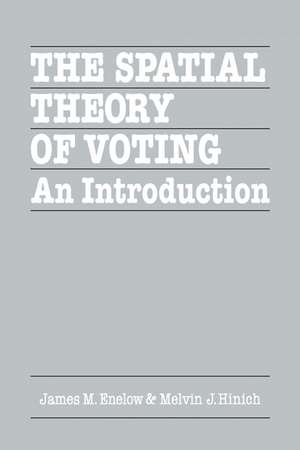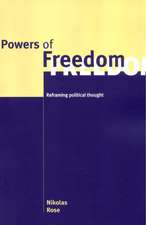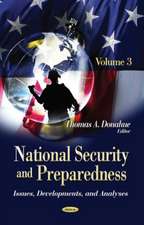The Spatial Theory of Voting: An Introduction
Autor James M. Enelow, Melvin J. Hinichen Limba Engleză Paperback – 26 apr 1984
Preț: 284.78 lei
Nou
Puncte Express: 427
Preț estimativ în valută:
54.49€ • 56.78$ • 45.12£
54.49€ • 56.78$ • 45.12£
Carte tipărită la comandă
Livrare economică 03-17 aprilie
Preluare comenzi: 021 569.72.76
Specificații
ISBN-13: 9780521275156
ISBN-10: 0521275156
Pagini: 256
Ilustrații: 1
Dimensiuni: 152 x 229 x 15 mm
Greutate: 0.38 kg
Editura: Cambridge University Press
Colecția Cambridge University Press
Locul publicării:New York, United States
ISBN-10: 0521275156
Pagini: 256
Ilustrații: 1
Dimensiuni: 152 x 229 x 15 mm
Greutate: 0.38 kg
Editura: Cambridge University Press
Colecția Cambridge University Press
Locul publicării:New York, United States
Cuprins
Preface; 1. Spatial voting models: the behavioural assumptions; 2. The unidimensional spatial voting model; 3. A two-dimensional spatial model; 4. A general spatial model of candidate competition; 5. The influence of candidate characteristics and abstention on election outcomes; 6. Voting on budgets; 7. Models of voter uncertainty; 8. Institutions; 9. Empirical testing of the spatial theory of elections; 10. Concluding observations; References; Answers to selected problems; Index.
Descriere
This book provides an introduction to an important approach to the study of voting and elections: the spatial theory of voting.

















